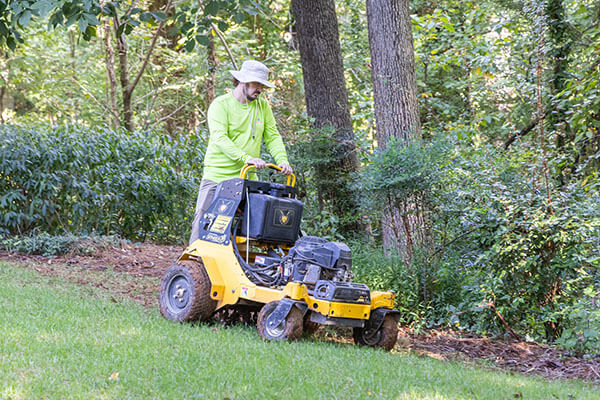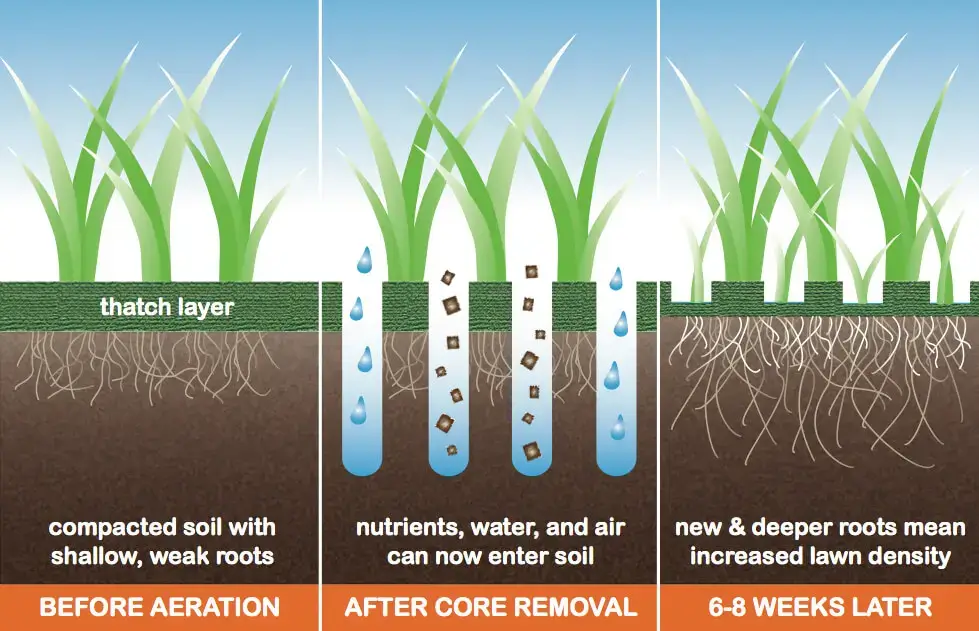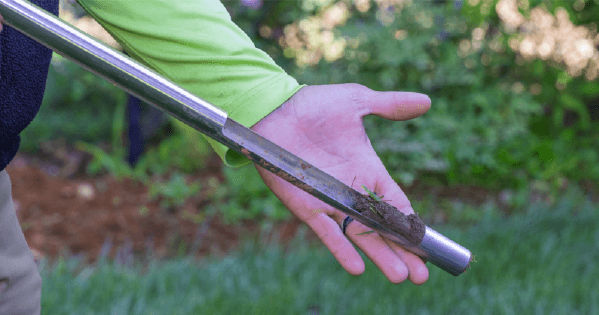Why does my lawn need core aeration?

- Compacted Georgia clay soils impede the movement of air, water and nutrients to the grass roots.
- Roots require oxygen to grow and to absorb nutrients and water.
- When compacted, soil contributes to the accumulation of thatch because restricted oxygen levels impair the activity of earthworms and other thatch-decomposing organisms.
- Thatch accumulates faster on compacted soils and heavy clay soils than on well aerified soils.
- When thatch depth exceeds 1/2” it becomes a problem, reducing water movement and encouraging shallow, weak root systems. Thick thatch also can become a home for insects and disease.
- Many people complain about moss growing in their lawns in Atlanta. Lawns that drain poorly due to soil compaction are displaying a “Moss Welcome” sign.
How lawn core aeration strengthens your lawn

How does lawn core aeration work?
- Core aeration involves the removal of small soil plugs or cores out of the lawn. Known as a core aerator, the machine extracts 1/2 to 3/4 inch diameter cores of soil and deposits them on your lawn. Aeration holes are typically 1-3 inches deep and 2-6 inches apart.
- Core aeration is a recommended yearly lawn care practice to control thatch buildup, especially on compacted, heavily used turf.
How will my lawn benefit from core aeration?
- Compacted soil will be loosened, increasing the availability of water and nutrients.
- Oxygen levels in the soil will be enhanced, stimulating root growth and enhancing the activity of thatch-decomposing organisms.
- Your lawn’s drought tolerance and overall health will be improved.
- Your turf will produce new shoots and roots that “fill up” the holes from core aeration, increasing its density.
When is the best time to core aerate my lawn?
- The best time to aerate your warm-season lawn (Bermuda, Zoysia) is spring and early summer.
- The best time to aerate your Tall Fescue lawn is in the fall, in conjunction with fall reseeding.
It’s never too soon (or too late) to start improving the health and appearance of your lawn.
At Simply Green Lawn Care, we professionally core aerate your lawn in metro Atlanta using the most advanced equipment and best-qualified personnel.

